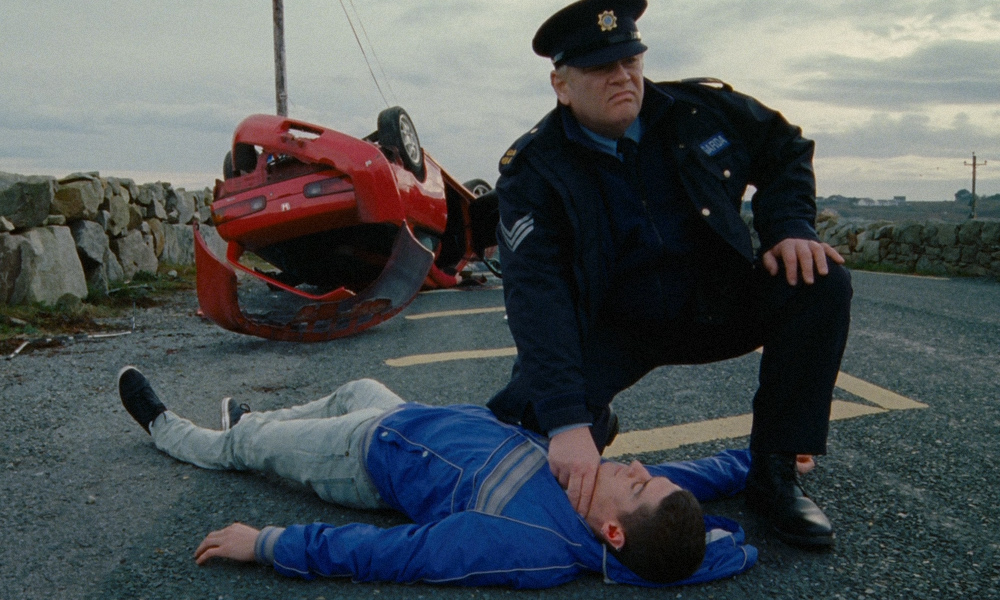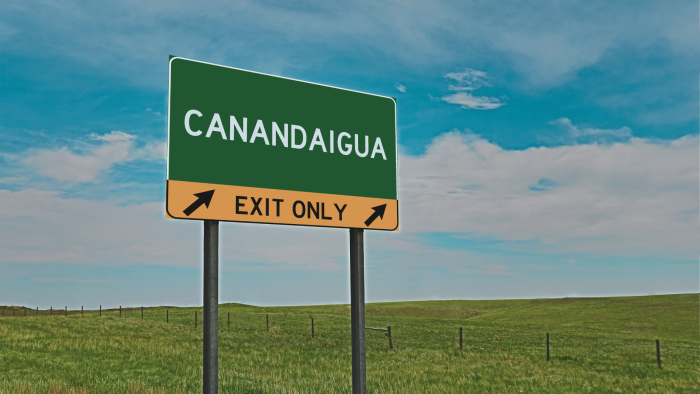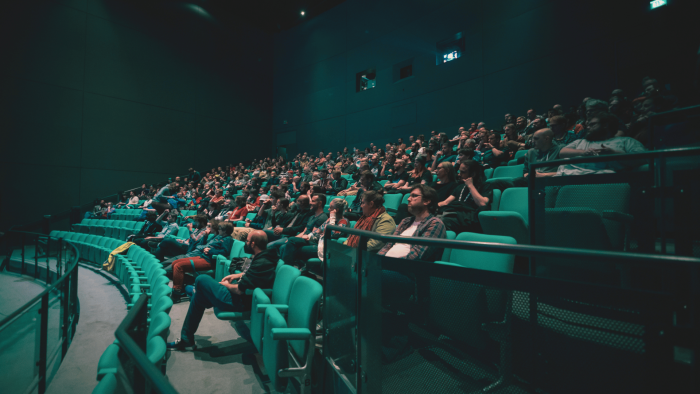We’re probably stating the obvious when we say the opening scene of a movie is the most important one. It has to introduce the audience to the world of the movie, flesh out at least the main character and his or her motivations, provide chronological context if the movie isn’t set in the present, and will usually begin the soundtrack or score as well. With all that going on, it’s a wonder movies even happen.
Goodfellas
Goodfellas drops a hell of a line on you almost immediately. “As far back as I could remember, I always wanted to be a gangster.” And delivered after a scene where it’s almost unbelievable that someone would ever voluntarily enter a life like that. How can stabbing/shooting a guy to death in the trunk of your car be a part of an attractive lifestyle? But that’s what makes it perfect. It’s the whole movie summed up in a single scene. Tommy’s an insane little man with an insatiable lust for blood and power. Jimmy is all business and wants the most efficient end to the job. Henry’s willing to do part of the work but doesn’t particularly want to get his hands dirty. And the whole movie unfolds from there.
The Departed
Let’s put the two Scorsese movies next to each other. One, because, obviously, they’re Scorsese movies, and two, because they both have bone-chillingly good opening lines. We’ve already covered Goodfellas, but having Frank Costello open The Departed with his quote about twisting the Boston environment to his own personal whims is a perfect summary of what this movie is going to be about. Then, as Costello lays out the Irish American experience and how it affects everyone around it, you get to see the attitude of an entire culture solidify around one figurehead. And have you ever heard “Gimme Shelter” used better?
Raiders of the Lost Ark
If someone crawled out of a rift in space/time and demanded we show them everything they needed to know about modern cinema, we’d show them the Indiana Jones trilogy. If they said they only had ten minutes, we’d show them the opening to Raiders of the Lost Ark. It’s a perfect sequence. We know the stakes, we see Indy is a capable adventurer, and the age and danger of the ruins is clear. It starts out with some tense, cautious prodding and slowly evolves into an explosive, iconic chase. Indy getting run down by the boulder is endlessly entertaining and couldn’t have been done any better. It doesn’t hurt that the opening credits are great too. Credits
Inglourious Basterds
You could spend full years of film school dissecting everything going on in the Inglourious Basterds opening. There are layers and layers of intense characterization, a ridiculously suspenseful tone, and an impressive amount of manipulation. By the end of the scene, you know everything you need to about the man who, you could seriously argue, is the real main character of the movie, not just the antagonist. This scene is also a great way for Christoph Waltz to explode into American cinema. Before Tarantino pulled him into Inglourious Basterds, Waltz was content to stay fairly small time in his native Austria. But this opening and his subsequent performance proved he was a talent for the ages.
There Will Be Blood
It’s not often that a movie can make masterful use of silence. After all, it’s an audio-visual medium. Audio is the first one in the title. But There Will Be Blood defies its own medium by completely omitting dialogue for the first quarter of an hour of its run time. It’s an impressive feat that sets the expectations for the rest of the movie, expectations that we think it lives up to. Plus, when was Daniel Day-Lewis not fascinating to watch in any movie. He could sit there silently for fifteen minutes in a different costume and be touted as a genius visionary method actor.
Saving Private Ryan
The first time we sat down to watch Saving Private Ryan, when we were much younger, we couldn’t get through it. It’s twenty minutes of brutal, true-to-life warfare, and we don’t have to remind you that it might be the most accurate portrayal of an American battle ever put to film. Men who landed on D-Day praised it as a faithful representation of what they experienced that morning. Obviously, a pick like this one is less about how “cool” the scene is, as that’s hardly a word we would use to describe it. It’s more getting a short glimpse into the harsh reality of a soldier’s life during the Allied invasion of France.
Seven Psychopaths
Martin McDonagh is scarily good at banter and dialogue, so it’s no surprise that they’d be the focus of the opening scene of Seven Psychopaths. What is surprising is just how quickly and effectively this opening pulls you in to the rest of the movie. As soon as the Jack of Diamonds shoots the two henchmen, we knew this wasn’t one of those movies you can guiltlessly pause for twenty minutes or leave on the background while you catch up on housework. Seven Psychopaths requires your full attention and we were glad to give it. It should also be said, for such a short time on screen, the henchmen give surprisingly compelling performances. We wouldn’t be opposed to a prequel short film or two that helped us get to know them better.
The Guard
John Patrick McDonagh packs a hell of a lot into such a short scene and we’re still working to figure out exactly what it means to the rest of The Guard. It’s obvious that this sequence is meant to flesh out Brendan Gleeson’s character, and it does that well. This is a policeman who’s seen plenty in spite of his rural Irish posting, so there’s not much left that could surprise him. But, having seen other movies by the McDonagh brothers, we suspect this scene is also supposed to say something about the setting.
People who know the island of Ireland, particularly the west, better than we do would most likely be able to break down exactly what this scene means and how we’re supposed to take it. In our mildly educated opinion, rural Ireland must not have much to entertain kids who are looking for cheap thrills and scenes like this one are fairly common. Whatever the deeper comments may be, the scene is a great example of McDonagh’s larger body of work, with gruesome events punctuated by dark humor and the presence of Brendan Gleeson.
Captain America: Winter Soldier
In a way, there are two opening scenes to Captain America: Winter Soldier. There’s the one where Cap completely wrecks a band of French pirates on a marine hostage rescue mission. Don’t misunderstand. We love that scene and it sets the stage for some slick, hard-hitting fights we still think about (that elevator fight is still top ten for us).
But the opening we like most is the simple running scene where Cap meets Sam Wilson (who would become Falcon in this same movie). It’s a great character study in two extremely likeable Marvel heroes. Cap is polite to a fault and sticks to his principles no matter what, the latter quickly becoming a sticking point for his fellow heroes in Civil War. Wilson is competitive and willing to pit himself against those who far outmatch him. It makes perfect sense these two would become fast friends and watching their relationship grow over the course of one morning’s exercise routine is a light-hearted, funny beginning to one of the MCU’s best offerings.
Children of Men
In terms of world building, we don’t think we’ve ever seen a movie that does it as quickly, efficiently, or effectively as Children of Men. Within 90 seconds, you know exactly what shape the world is in socially, economically, diplomatically, and, for Theo, personally. Different factions’ priorities are laid out, the value of human life is established, the aesthetic of the world is apparent, and the feeling of destitution is palpable. So much is packed into this scene that we’re amazed the screenwriter didn’t run out of material three pages into the script.




